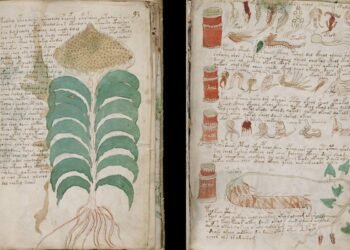Recent archaeological findings reveal that “King Arthur’s Hall,” a mysterious stone enclosure on Cornwall’s Bodmin Moor, dates back over 5,000 years, to the Neolithic period, making it one of England’s oldest structures and predating the legendary King Arthur by millennia. This discovery shifts the historical narrative surrounding the site, which was previously believed to be a medieval structure used as an animal enclosure.

A research team from the University of St Andrews, led by Dr. Tim Kinnaird from the School of Earth and Environmental Sciences, collaborated with archaeologists from the University of Reading, Newcastle University, and the Cornwall Archaeological Unit (CAU) to conduct an in-depth analysis of the site. They employed a technique called Optically Stimulated Luminescence (OSL) to date the monument. This method estimates the last time soil was exposed to light, revealing that the stone-lined rectangular enclosure, with 56 standing stones along its inner embankment, was constructed between 5,000 and 5,500 years ago, in the late 4th millennium BCE. Dr. Kinnaird called this dating a “major revelation,” stating, “It’s extremely exciting that we’ve finally been able to date the construction of this enigmatic monument, previously grounded in myths and legends.”
The discovery challenges long-standing assumptions about the site’s origin. For years, Historic England classified King Arthur’s Hall as a medieval animal pound dating back to approximately 1000 CE, despite speculation over its unusual design, standing stones, and north-south orientation, which suggested an earlier date. Pete Herring, president of the Cornwall Archaeology Society, noted that “The romantic sounding 16th-century name ‘King Arthur’s Hall’ tells us that here is a place regarded by the moorland community as something ancient and unfathomable.” The name, however, has no substantiated connection to King Arthur himself, beyond that it was first recorded as “King Arthur’s Hall” in 1584.
The layout of the monument is unique, featuring a sunken rectangular enclosure outlined by an embankment and lined with standing stones, some up to six feet tall. Researchers have not identified any other Neolithic structures of comparable design, suggesting that the monument held a special or sacred significance. The precise purpose of the site remains speculative. “We may presume it was a sacred site, a place for gatherings, rituals, or ceremonies, but perhaps Neolithic people made and used it for very different purposes,” Herring added, reflecting on the site’s enigmatic nature.
Additional excavations by the Cornwall Archaeological Unit uncovered pollen, seeds, and insect remains in the soil, which researchers used for radiocarbon dating. Findings indicate the structure continued to be used, or at least modified, during the medieval period, possibly as an animal pen or reservoir for tin mining. Radiocarbon analysis suggests this secondary use occurred roughly 2,000 to 2,500 years ago, during which time the inner marshy area may have served as a water source.
The significance of King Arthur’s Hall extends beyond the structure itself; it forms part of a larger Neolithic landscape on Bodmin Moor that includes other stone formations, burial mounds, and enclosures like the Rough Tor, indicating a thriving prehistoric community. “Given that the monument is now 4,000 years older than first thought, we now need to consider the monument within the context of Bodmin Moor’s prehistoric landscape,” said Dr. Kinnaird.
The site, which has been listed by Historic England as at risk from vegetation growth and erosion caused by human and animal traffic, will benefit from its newly confirmed Neolithic status. Conservation efforts are set to begin with the reinforcement of fencing to limit visitor impact and support long-term preservation strategies.




















